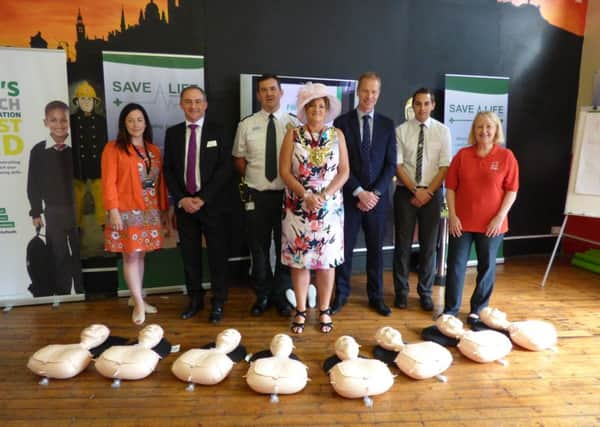Learn how to save a life at the National Emergency Services Museum in Sheffield


At the new Save a Life Education Centre, visitors will be taught how to help patients in cardiac arrest by performing cardiopulmonary resuscitation (CPR) and using a defibrillator which provides a high energy electric shock to restore the heart’s normal rhythm.
Lord Mayor of Sheffield Cllr Denise Fox performed the official opening and Uniformed Public Service students from The Sheffield College were among the first visitors to receive life-saving training.
Advertisement
Hide AdAdvertisement
Hide AdOver 30,000 people suffer cardiac arrests outside of hospital in the UK every year. When someone suffers a cardiac arrest, the chance of survival falls by up to 10% every minute without first aid. But, with CPR and the use of a defibrillator within three minutes, their chance of survival could be as high as 70%.
The attraction, which is located on the second floor of the museum, has been made possible thanks to a partnership between the museum, Yorkshire Ambulance Service NHS Trust, Yorkshire Ambulance Service Charitable Fund, St John Ambulance, the British Heart Foundation, Zoll, South Yorkshire Police and South Yorkshire Fire and Rescue Service.
Paying visitors will be able to take advantage of 20-minute CPR and defibrillator awareness workshops. However, thanks to funding from the Yorkshire Ambulance Service Charitable Fund, St John Ambulance, South Yorkshire Police and South Yorkshire Fire and Rescue Service, school visits for Key Stage 3 pupils across Yorkshire will be provided free of charge for at least the next 12 months. The usual fees will apply for other school visits.
St John Ambulance has employed Phil Westnidge, who is the dedicated trainer for the scheme and will be at the museum daily to deliver the training and related first aid.
Advertisement
Hide AdAdvertisement
Hide AdJason Carlyon, Resuscitation Manager for Yorkshire Ambulance Service, said: “Evidence is clear that when someone has a cardiac arrest, they need immediate CPR and defibrillation to ensure the best possible chance of survival and recovery. By providing training to members of the community, and particularly schoolchildren, we will be equipping them with the skills and confidence to save the life of a loved one or stranger in an emergency.”
Matthew Wakefield, Head of Museums and Collections at the National Emergency Services Museum, said: “We are extremely proud to be the home for such a project and housed in this very setting it should truly fire the imagination of participants and teach vital life safety through hands on learning with history.”